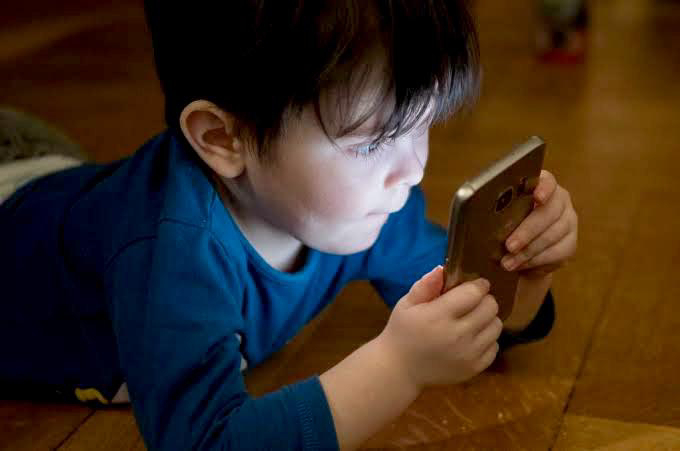Screen Time & Speech Delays: The Cost of Digital Babysitting
The rise in screen time among toddlers has become a pressing concern for parents everywhere. Many express their worry that their little ones seem glued to screens, showing little interest in any other activity. This obsession isn’t without consequences, prolonged screen exposure poses serious risks to a child’s eyesight, brain development, and behavioural tendencies. But what is it about these screens, particularly for children below 2 years of age that makes them so irresistibly addictive?
The wildly popular YouTube channel ‘Cocomelon’, has the second highest number of views globally and for the kids, it’s their most favourite channel to watch animated videos. It’s content is famous for captivating toddlers to the point where they can’t look away. Around us, we often see kids glued to screens watching Cocomelon videos for hours with undivided attention without getting bored. The creators of Cocomelon have employed certain tactics that are scientifically designed to grab and hold the attention of the toddlers.
Cocomelon was created in 2005 with the aim of creating short musical animated videos for kids. It has grown to have 158 million subscribers and billions of views weekly. It’s the second most watched and third most followed channel on YouTube. Its popularity touched the sky during the COVID 19 lockdown in 2020 as many children were struck at home and online content was the prime source of entertainment. The short clips mainly of nursery rhymes seem to fascinate toddlers to the extent where they cannot look away even for a second. Cocomelon is significantly associated with infant’s neuro developmental issues, speech delays, behavioral tantrums, learning disabilities etc.
To decode the effects of continued exposure to its content, let’s first understand its characteristics,The videos are 3D animated nursery rhymes and songs and are highly stimulative because it’s a multi sensory experience. The high level of brain stimulation occurs because the fast changing visual signals. The clips and scenes of Cocomelon changes every 3 seconds. Because the visual field constantly changes within 3 seconds, kids find it irresistible to deviate and remain hooked to the screens in order to track what’s going on. The attention span overtime drastically reduces because the kids are trained to pay attention to one type of stimuli for only 3 seconds or less. This could be a major reason for the attention span disorders among toddlers that impacts their concentration. Due to the constant movement on screen, the brain becomes accustomed to this quick pacing. Over time, this kind of overstimulation might make it challenging for children to find enjoyment in less stimulating activities like reading and writing.
The videos are packed with fast-paced visuals and constant sensory input, which can work like a stimulant for young children. Some researchers have stated Cocomelon to be as addictive as nicotine where the children who watch it almost enter a trans state of mind. Experts in child development suggest that watching such programs can trigger the release of dopamine ie the brain's feel good chemical associated with pleasure and rewards. This can lead to kids wanting more and more screen time, often reacting with frustration or even tantrums when the show ends. Everything else feels dull and slow compared to Cocomelon.
In an article published by Ranae, mother of a toddler, she expressed her concern for her young son watching it where she stated, “You could be waving your hand right in front of his face and he wouldn't move. It was almost scary." The rapid scene changes and highly edited videos with maximum color saturation grabs the childrens’ attention. Many videos on Instagram displayed the kids quickly reacting in awe and excitement on hearing the jingle of Cocomelon. It is dangerously associated with eyesight issues because the bright and contrasting colours and relentless editing weakens the sensitive eyesight of young kids.
The creators of the channel have employed manipulative techniques to make children addicted to their content. They use a two-screen setup, where one screen plays Cocomelon and the other shows real-life scenes, such as nature, cars, or people walking. Children are placed in front of these screens, and every time their attention shifts to the real-life scenes, the creators record the timing of it. This data is then analyzed to determine which parts of the show are most effective and which are not.
The videos to some extent are also held responsible for the trend of speech delay among children up to 3-4 years. The new generation toddlers find it difficult to frame sentences and aren’t satisfactorily verbalising. Continued exposure to the videos could be one reason. Unlike other common TV shows or movies, it doesn’t have a coherent storyline. Instead, it has extremely short clips paired with poorly written lines. This makes it difficult for children to grasp the plot and build vocabulary or understand the start-to-end story which is essential to learn framing sentences as per thoughts in mind. Screen time affects their brains in a way that's similar to the effects of a drug, triggering the same chemical responses. This can lead to withdrawal symptoms when the screens are taken away which hinders their ability to focus and learn. Most critically, every hour spent watching it is an hour they aren’t engaging with or exploring their environment. Language acquisition only happens through interaction. Hence, if children are overly occupied with screens without human communication, the speech delay or speech issues are inevitable consequences.
To address this issue effectively, limiting children's exposure to Cocomelon is essential. However, abruptly stopping its use may not be well received and could result in increased tantrums. A more effective approach would be to gradually reduce screen time for example, by decreasing it by five minutes each day. Also, adjusting the playback speed of these videos to 0.75x or eventually to 0.5x can help. Slowing down the pace makes the content more aligned with a natural rhythm, which may help reduce its potential long-term detrimental effects on attention spans. Every minute spent in front of a screen is a minute taken from real play, real connection, and real growth. Limiting screen time has never been more important hence, parents must make informed and thoughtful choices because their child’s future depends on it.





Your writing is well researched.you have put in lots of hard work. Keep it up, my best wishes for future writing.
ReplyDeleteShambhavi.. your analysis of the problem is very insightful.
ReplyDeleteSurekha keny